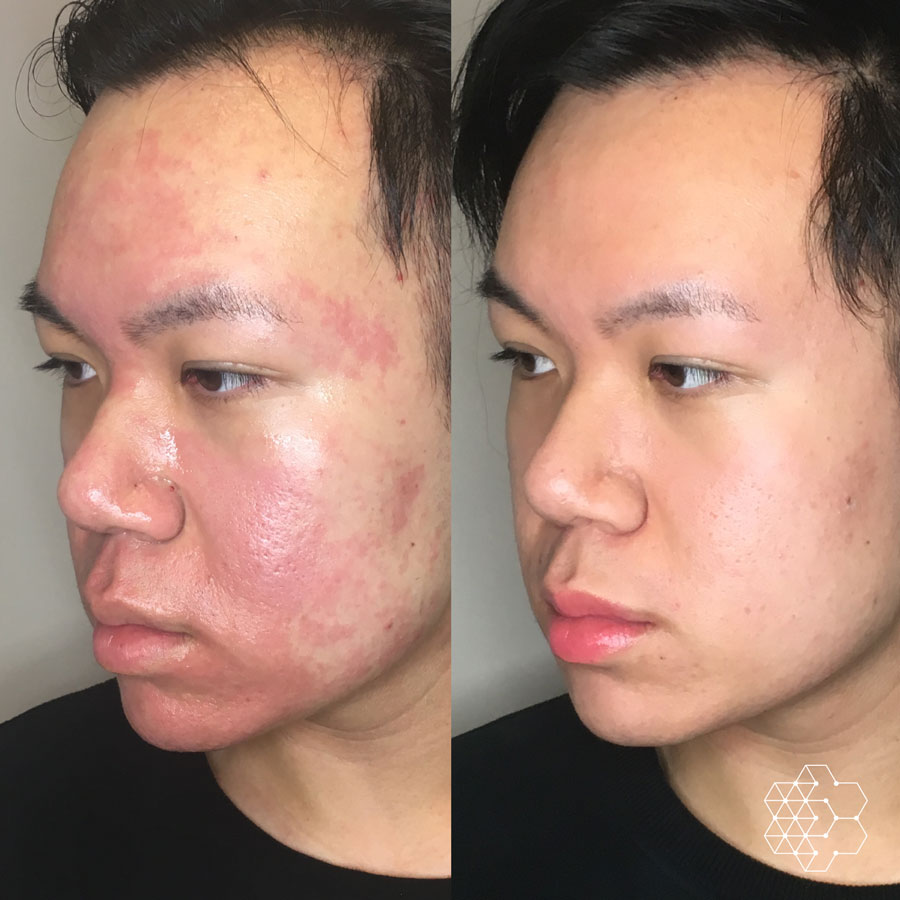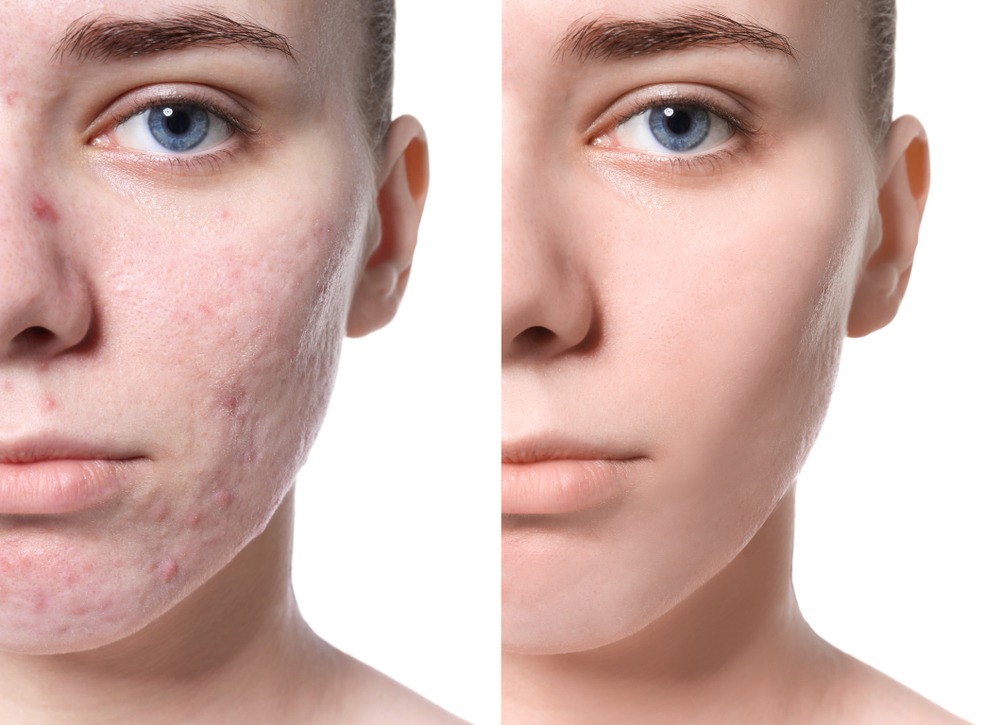A Comprehensive Guide to Handling Skin Problem: Concentrating on the Therapy of Acne Scars
Acne scars stand for a considerable issue for many individuals, typically impacting self-confidence and general skin wellness. Understanding the various kinds of acne scars, such as atrophic and hypertrophic, is essential for efficient management and treatment.
Recognizing Acne Marks
Recognizing acne marks involves recognizing the complicated interaction between skin recovery and the inflammatory procedures that occur during acne break outs. Acne creates when hair roots become clogged with oil, dead skin cells, and germs, leading to inflammation. acne treatment for sensitive skin. This inflammatory response is essential for battling infection yet can also lead to damages to the skin's tissue
When the body attempts to heal itself, it produces collagen, a healthy protein necessary for skin structure. Nevertheless, the amount and high quality of this collagen can differ, leading to various kinds of scars. Factors influencing scar development consist of the extent of the acne, private skin kind, genes, and the body's healing reaction.
Prompt monitoring of outbreaks decreases swelling and cells damages, which are essential elements in scar advancement. Ultimately, comprehending the underlying devices of acne and its recovery process is crucial for efficient administration and avoidance of acne marks.
Kinds Of Acne Scars
The complexity of acne marks can be categorized into several distinctive kinds, each mirroring the underlying skin damage and healing feedback. One of the most usual types consist of atrophic marks, hypertrophic marks, and keloids.
These marks can further be categorized into icepick, boxcar, and rolling scars, each varying in shape and depth. acne treatment for sensitive skin. Icepick scars are narrow and deep, appearing like tiny punctures, while boxcar scars have a larger, extra angular appearance.
Hypertrophic marks, on the other hand, are elevated and result from an overflow of collagen throughout healing. These scars may vary in size and can often discolor with time however might continue to be popular.
Keloids are an extra severe form of hypertrophic scarring, prolonging beyond the original injury website and usually requiring a lot more aggressive therapy alternatives. Recognizing these types is important for figuring out one of the most effective treatment approach tailored to an individual's certain mark type and skin disease.
Topical Therapies
Topical treatments play a critical duty in taking care of acne marks, offering patients a series of choices aimed at boosting skin structure and appearance. These therapies mainly focus on advertising skin regeneration, minimizing coloring, and improving total skin tone.
Among one of the most commonly used topical agents is retinoids, which are derivatives of vitamin A. Retinoids stimulate collagen production and speed up cell turnover, assisting to diminish the look of marks with time. In addition, alpha hydroxy acids (AHAs) and beta hydroxy acids (BHAs) can exfoliate the skin, removing dead skin cells and advertising a smoother surface.
Another efficient classification includes topical anti-oxidants, such as vitamin C, which can help to lighten hyperpigmentation related to acne scars while giving anti-inflammatory advantages. see this Silicone gels and sheets have actually been shown to moisturize and squash scars, making them less visible.

Expert Treatment Alternatives
When it comes to addressing much more extreme acne marks, people frequently transform to expert therapy alternatives that can deliver more significant results than topical treatments alone. These treatments are generally provided by skin specialists or licensed practitioners and consist of various methods customized to private skin types and mark severity.
One of one of the most usual treatments is chemical peels, which make use of acids to advertise and exfoliate the skin regeneration. This approach can significantly lower the appearance of superficial marks. Microneedling, another effective alternative, entails creating micro-injuries in the skin to boost collagen production, boosting structure and reducing marks.
Laser therapy is additionally commonly employed, with fractional lasers particularly targeting marked regions while maintaining bordering skin. This technique can yield exceptional improvements in skin appearance over several sessions - acne scars. In addition, facial fillers are utilized to restore volume and smooth out uneven skin surface areas, providing prompt, albeit temporary, results
Way Of Living and Home Remedies
Incorporating way of life modifications and natural remedy can play a substantial function in taking care of acne scars, complementing expert therapies. Preserving a balanced diet regimen rich in minerals, vitamins, and anti-oxidants can facilitate skin healing. Foods high in vitamin C, such as citrus fruits, and those having zinc, like nuts and seeds, promote skin regeneration and More Help assistance decrease swelling.
Hydration is likewise essential; alcohol consumption appropriate water maintains the skin hydrated, assisting in its all-natural fixing procedures. Routine workout improves blood flow, which can enhance nutrient shipment to the skin and enhance total skin tone.
Along with dietary modifications, including topical natural remedy can be beneficial. All-natural components such as aloe honey, vera, and tea tree oil have anti-inflammatory and antibacterial buildings, which may assist in lowering the look of scars. Scrubing the skin with mild scrubs can likewise advertise cell turnover, assisting in the fading of marks over time.
Moreover, establishing a regular skincare regimen that consists of sun defense is vital, as UV direct exposure can dim marks. By incorporating these lifestyle alterations and natural remedy, individuals can improve their skin's healing process and accomplish a much more even complexion.
Conclusion

Recognizing acne marks includes acknowledging the complex interplay between skin healing and the inflammatory procedures that take place during acne outbreaks. Factors influencing mark formation consist of the severity of the acne, individual skin kind, genetics, and the body's healing feedback.
These marks can even more be categorized right into icepick, boxcar, and rolling marks, each varying in shape and depth. Icepick marks are narrow and deep, looking like little punctures, while boxcar scars have a wider, more angular appearance.Efficient administration of acne scars necessitates an extensive understanding of their types and the hidden systems involved in mark development.